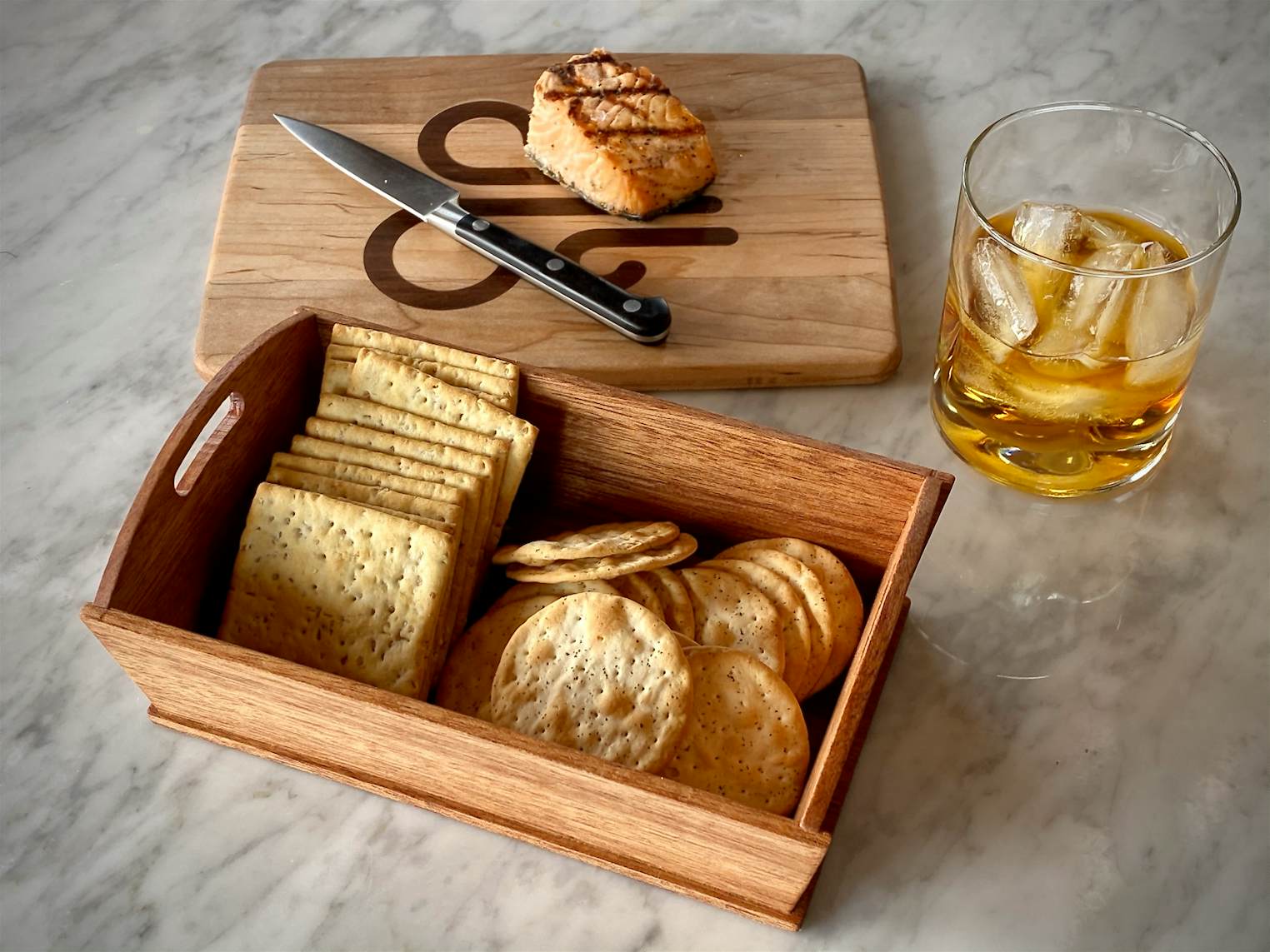Snack Boxes


Two small boxes to use for cocktail hour snacks, household clutter, or whatever!
108
Kitchen
Files Included (8)
Bevel_Sanding_Jig.png
64 kBLarge Snack Box Jigs 1_4.svg
6 kBLarge Snack Box Jigs 3_8.svg
5 kBLarge Snack Box Parts.svg
6 kBSmall Snack Box Jigs 1_4.svg
7 kBSmall Snack Box Jigs 3_8.svg
4 kBSmall Snack Box Parts.svg
6 kBSnack Boxes.pdf
3 MB
Materials
18" x 5.5" x 0.20" hardwood (for small box)
23" x 5.5" x 0.20" hardwood (for large box)
14" x 2" (qty. 2) 3/4" plywood (for bevel sanding jig)
A sheet of 150 grit sandpaper
1/4" and 3/8" plywood (if you make the glue jigs)
Titebond glue
Foodgrade finish
Tools
Shaper Origin
1/8" cutter
Rubber bands
X-ACTO knife
Table saw (if making the glue jigs)
Instructions
My grandfather designed and started making these in the 1940's, out of wood salvaged from cigar boxes. These snack boxes have graced our family cocktail hours for seven decades now. I don't have any cigar boxes, so a nice hardwood will have to do for this reproduction. The only challenge is that the material thickness is a strict 0.20". It's important that this is accurate. If you don't have a planer, call on a good friend who can thickness the material for you. 1. Build the bevel sanding jig from two pieces of 14" x 2" 3/4" plywood, glued together. Cut a 10 degree bevel. (See the file: Bevel_Sanding_Jig.png) ** Important: When cutting with a tilted table saw blade, make sure that the part/blade relationship is such that the part will not be caught under the blade. If it is, you will surely get a very nasty kickback. I found this out the hard way. ** 2. Layout the design for either the small or large box. 3. Cut the mortises first, so that you don't forget to do them. **Important: the mortise on the base is 0.03" deep. The side mortises are 0.05" deep. Be careful; it's easy to confuse these cuts.** 4. Cut the perimeters and the finger holes. 5. Use a pencil to draw a line across the bottom edge of each end of the front/back and side pieces. Carefully sand the 10 degree bevel on these parts, using the bevel jig. Sand until about 10% of each pencil mark is still visible (to avoid sanding too much). ** For the front/back pieces, make sure the bevel is oriented correctly so that the mortises face the interior of the box. 6. Check that the sides fit easily into their mortises. If not, sand the faces a bit until they fit nicely. Square up the round mortise corners in the base with an X-ACTO knife. 7. Dry assemble the front/back/sides, and make sure that they fit properly in the base. Adjust as necessary. Be careful; any sanding that you do on the bottoms of the left/right sides make them wider at the base. 8. Round all edges that are not being glued. 9. Glue together, using many rubber bands to clamp it tightly. It's hard to put together without an extra pair of hands, so this is where you call on your lovely assistant for help. 10. Remove excess glue, sand as necessary, and finish. I use an initial coat of mineral oil, followed by cutting board wax (e.g. Boos Block). Glue Jigs (optional) I designed these fixtures after having built about 10 boxes, and realizing that I would be making many more. Three of the pieces are made of 3/8" plywood. The other two fixtures are laminated from 1/4" plywood. See the pdf file for details on how they are constructed/used. 1. Cut out the parts from 1/4" and 3/8" plywood. 2. Glue and clamp the 3 pieces of the side jigs. 3. Glue and clamp the 3 pieces of the front/back jigs. 4. Cut a 10 degree bevel on the front/back and side jigs. ** Important: Make sure that you have the correct orientation for the front/back jigs. **







